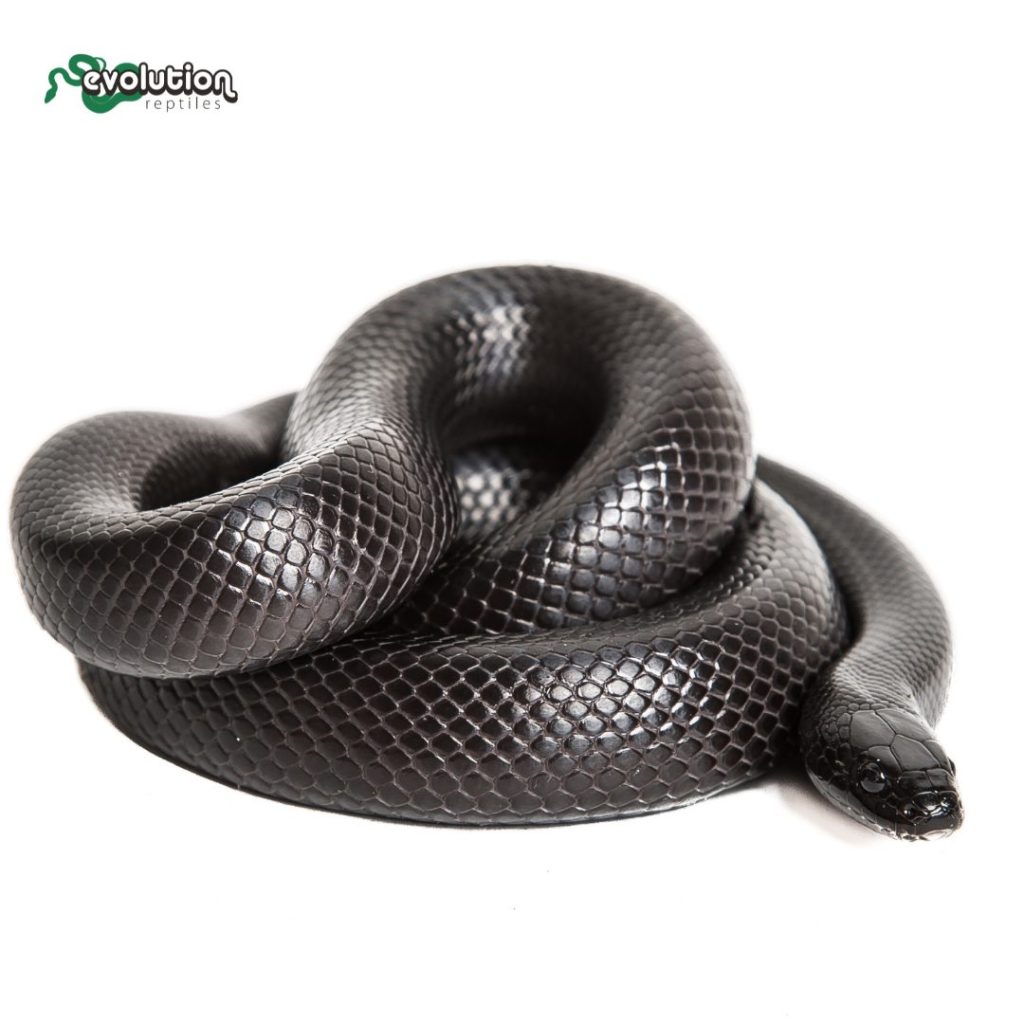Copyright 2021 Evolution Reptiles
All rights reserved.
Copyright 2025 Evolution Reptiles
All rights reserved.
All rights reserved.
One of a group of subspecies of the common king snake, the Mexican black king is a splendid animal, sadly a lot less common in the hobby than it used to be. They are usually completely patternless but their jet black scales reflect a “blueish” shimmer when exposed to light. The Mexican Black Kingsnake is a relatively small species of snake, growing to lengths of between 90 and 100cm (3 to 4 feet), although occasional specimens can reach 150cm (5 feet).
Rocky slopes, open dry woodland, savannah and arid scrub are the sort of habitats where you will find the wild Mexican black king. Like nearly all kingsnakes, they are at least partially immune to the venom of rattlesnakes, which they will sometimes eat in the wild. The name ‘kingsnake’ comes from the fact that they will eat other snakes, although in actual fact kings will eat just about anything!
We have found, over the years, that it works perfectly well to place a hatchling into an adult sized enclosure, provided that there are sufficient hides to allow the baby snake to feel safe. (A good rule of thumb is that if the snake can move from one side of the enclosure to the other without showing itself, you have enough hides.) A 90cm (3’) vivarium can be used, but a 120cm (4’) is much better, as these are robust and active snakes that appreciate a good bit of space.
King snakes should be kept separately as they are ophiophagus (snake eaters!)

King snakes require a temperature gradient of 25°C to 30°C during the day; this can be achieved by using a deep heat projector and a basking light on thermostats mounted at one side of the vivarium to create a warmer side. At night the temperature should drop to around 20°C to 25°C. A simple 12 hour light cycle is ideal for king snakes. UV lighting is recommended, as this is a Ferguson zone 2 animal, meaning that in the wild they are exposed to a moderate amount of sunlight. One of the low output T5 UVB tubes is ideal to give this splendid snake the amount of UV that it needs to live a long and healthy life.
The snake will require hides in the vivarium so that it can feel secure. By having several in different areas of the vivarium the snake will be able to choose the one that is at the best temperature. A humid hide is also recommended, hollow hides with a damp moss inside which snakes will often use when they are shedding their skin. Plastic plants are also good to use, as these look very attractive in the vivarium as well as offering privacy. Live plants can work as part of a bioactive setup, but most plants will be flattened or dug up by a curious snake.
Feed your snake one defrosted mouse weekly, which should be no bigger than the largest part of the snake. King snakes can eat mice their entire lives, although they do appreciate a little variety and can be offered gerbils, hamsters, rats and chicks as they mature. King snakes are notoriously greedy! Resist the urge to feed your snake more often or larger prey as this can lead to the snake growing too fast, which can result in the head of the snake not growing at the same speed as the rest of the body. Obesity can also be a problem. If a snake is overfed they have no reason to move around their vivarium and this is detrimental to their health.
Copyright 2021 Evolution Reptiles
All rights reserved.